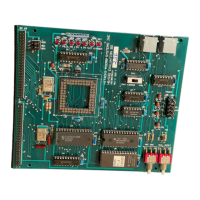Section 4 Exception Handling
4.1 Overview
4.1.1 Types of Exception Handling and Their Priority
As indicated in table 4-1 (a) and (b), exception handling can be initiated by a reset, address error,
trace, interrupt, or instruction. An instruction initiates exception handling if the instruction is an
invalid instruction, a trap instruction, or a DIVXU instruction with zero divisor. Exception
handling begins with a hardware exception-handling sequence which prepares for the execution of
a user-coded software exception-handling routine.
There is a priority order among the different types of exceptions, as shown in table 4-1 (a). If two
or more exceptions occur simultaneously, they are handled in their order of priority. An
instruction exception cannot occur simultaneously with other types of exceptions.
Table 4-1 (a) Exceptions and Their Priority
Exception Start of Exception-
Type Source Detection Timing Handling Sequence
High Reset External RES Low-to-High transition Immediately
Address error Internal Instruction fetch or data read/write End of instruction
bus cycle execution
Trace Internal End of instruction execution, if End of instruction
T = “1” in status register execution
Interrupt External, End of instruction execution or end End of instruction
Low internal of exception-handling sequence execution
Table 4-1 (b) Instruction Exceptions
Exception Type Start of Exception-Handling Sequence
Invalid instruction Attempted execution of instruction with undefined code
Trap instruction Started by execution of trap instruction
Zero divide Attempted execution of DIVXU instruction with zero divisor
81
Downloaded from Elcodis.com electronic components distributor

